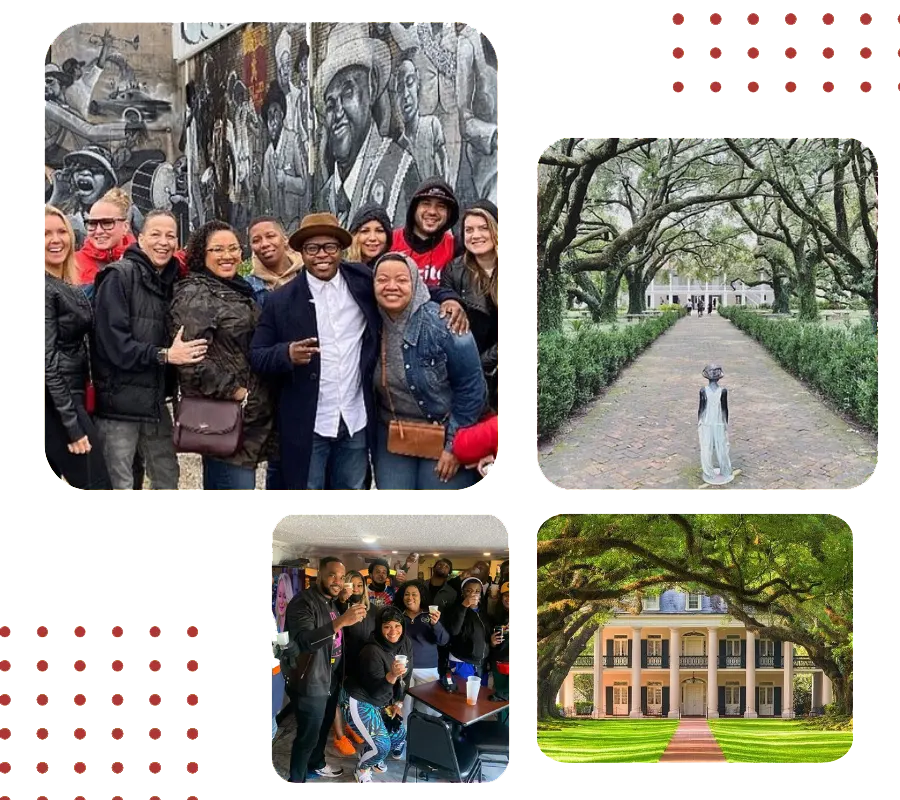
We’re dedicated to providing a comprehensive and immersive experience of the Afro-Creole culture in New Orleans. Join us and discover the heart and soul of this vibrant and unique city.

We’re dedicated to providing a comprehensive and immersive experience of the Afro-Creole culture in New Orleans.
Join us and discover the heart and soul of this vibrant and unique city.
Since 2017, founder Dennis M. has taken tourists on the ride of a lifetime with his red-carpet tours that give you the real deal of authentic NOLA.
Unlike other companies, 2nd Line Tours offers a one-of-a-kind guide that caters to the true foundation of New Orleans culture and growth. Providing guests with with a Afro, Creole and indigenous experience. we highlight moments in history that make NOLA what it is today. Mix that in with some spirits, fun, and energy, and it’s no wonder people name us the best tour ride in the city.
We love nothing more than to meet people visiting New Orleans for the first time, and especially the opportunity to give back to a city that has given so much to us. This is our home, and everything we are is because of what we have experienced and learned right here in The Big Easy.
2nd Line Tours was established in 2017. It is a tour company in the Greater New Orleans area that provides tours to locals and visitors. For us, we’re consider ourselves to be in the business of entertainment and thankfully there’s so much to see down in New Orleans. From our favorites spots and the people along the way, these diverse destinations will have you captivated from beginning to end. Book your visit today and join us on a once in a lifetime tour.
At 2nd Line Tours, we’re dedicated to providing a comprehensive and immersive experience of the African culture in New Orleans Join us and discover the heart and soul of this vibrant and unique city. Our Tours takes you on a journey through the streets of the city.












Thank you for visiting 2nd Line Tours. If you have any questions, please feel free to contact us. We would love to help you!